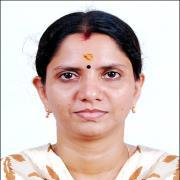
Neethu M. Sasi
Work place: Model Engineering College, Ernakulam, Kerala, India
E-mail: neethumsasi@gmail.com
Website:
Research Interests: Image Processing, Image Manipulation, Image Compression, Computational Science and Engineering
Biography
Neethu M.Sasi received B.Tech degree in Electronics and Communication from Mahatma Gandhi University, India, with distinction and M.Tech degree in Signal Processing from National Institute of Technology, Calicut, India, with gold medal in 2010. She is currently pursuing PhD degree from the Department of Electronics, Govt. Model Engineering College, Thrikkakkara, Cochin University of Science and Technology, India. Since 2008 she has been dedicated to the design and development of signal and image processing systems. She developed a low complexity space time adaptive system algorithm for sonar detection and presented it in 2010 IEEE Sensor Array and Multichannel Signal Processing Workshop conducted in Jerusalem. An IEEE member for the past 6 years, her research interests include signal processing, image processing and use of adaptive techniques in image processing.
Author Articles
Reduction of Blur in Image by Hybrid De-convolution using Point Spread Function
By Neethu M. Sasi Jayasree V.K.
DOI: https://doi.org/10.5815/ijigsp.2016.06.03, Pub. Date: 8 Jun. 2016
Blurring of images is an unwelcome phenomenon that is difficult to avoid in many situations. It degrades the quality of a variety of images, including real life photographic images, astronomical images and medical images. In this paper a new image de-blurring algorithm is proposed using Lucy Richardson method. De-blurring is performed in two stages. To arrive at the best guestimate, an iterative method is employed as an initial step which computes the maximum likelihood estimate of the point spread function (PSF) without any prior information. In the second step, Lucy Richardson algorithm takes the PSF estimated in the initial step as its input parameter. In particular, for better processing of the image, suitable color space identification is done as a pre-processing step. This makes use of the idea of edge detectors. This paper, as a significant contribution, proposes a de-blurring technique, which uses a hybrid de-convolution method with a color space identification stage. This enables its application for a broad spectrum of images from real life photographic images to single photon emission computed tomography images as well. The performance of the algorithm is compared against other existing de-blurring algorithms and the results prove a better output in terms of blur reduction. Standard test images and real medical images are used for appraising the algorithm.
[...] Read more.Other Articles
Subscribe to receive issue release notifications and newsletters from MECS Press journals